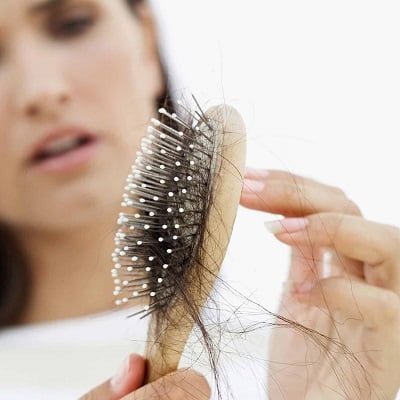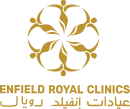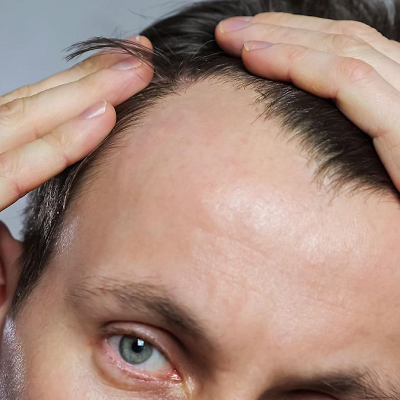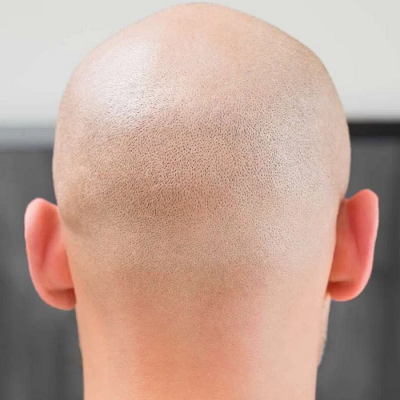
Everyone has 100,000 scalp hair follicles, regardless of gender. The Dermatologists consider daily hair loss of 50–100 strands typical. If you have typical hair loss, you should not see it. Bald patches or spots are usually signs of abnormal hair loss or early hair loss.
People often lose hair in the shower. However, washing, tying, and drying hair strains it, so shower hair loss should still be between 50 and 100 strands. When you take a shower and find clumps of hair falling out, you may need to see a hair loss specialist. Losing clumps of hair, regardless of whether you’re in the shower, suggests anything else.
Normal hair loss:
Women often lose more hair than men. Style stresses the hair, causing this. Colouring, heat styling, and tight styles can cause hair loss. However, this does not necessarily mean hair loss is more noticeable. You may have more hair strands falling out, but not enough to be noticeable. Tight hairstyles stress hair follicles, causing traction alopecia. If this happens, consider switching to a less harsh haircut and consulting a hair loss expert to establish the best course of action.
How much hair loss is excessive?
You must be curious about “excessive” hair loss since you know what normal is. “Telogen effluvium” is excessive hair loss that occurs daily. This type of hair loss usually results from a major life change like losing weight, delivering birth, stress, a high fever, or being sick. Women are especially sensitive to substantial hair loss during pregnancy and menopause. Hair loss usually returns to normal a few months once your body adjusts to the change. Telogen effluvium can best be diagnosed by a hair loss professional.
Who Can Experience Hair Loss?
“Hair loss” refers to excessive hair loss beyond “shedding.” However, “hair shedding” occurs naturally as hair follicles expand. This involves shedding old or resting hairs to develop new ones. Exposure to stress-inducing happenings, such as the following, can lead to significant hair loss. Significant weight loss of at least 20 pounds.
- Baby born recently
- Stressful situations like caring for a sick loved one, divorcing, or losing a job
- Consider a high temperature during surgery.
- recovering from a sickness, especially if it was followed by a brief fever
- Ending birth control pill use
Most people notice severe hair loss a few months following a stressful event. This shedding may begin two months afterwards giving birth and peak four months later.
Remember that this type of shedding is transient and normal. After six to nine months, hair usually stops shedding and returns to its original fullness. Body adjusts gradually to new state.
Symptoms:
- A wider part. When you part your hair, the breadth of your part may increase, indicating hair loss.
- Thinner hairline. If the crown of your head is higher than usual, your hair may be thinning.
- Lack of hair. Check the tipped brush or comb after use. How much hair does it accumulate on average? This could indicate hair loss.
- Bald skin. Size might change and expand over time.
- Clogged drains. You may find hair in your shower or sink drains.
- Itching or soreness may occur. If your scalp is itchy or painful, you may potentially lose hair due to a skin problem.
What hair loss treatments are available?
There are various hair loss treatments, but the best one for you depends on the causes.
- Treatment for most types of hair loss usually involves topical or oral medications. First-line treatment may include these drugs.
- Topical gels and creams solutions, or foams administered directly to the scalp are OTC medications. No prescription is needed for these therapies. Most consumer products include minoxidil.
- Finasteride (Propecia), a prescription drug, can reduce androgenetic hair loss, especially in male pattern baldness. Finasteride is taken daily to halt hair loss. However, some people experience new hair growth.
- If your hair loss is linked to an autoimmune disease, your doctor may prescribe corticosteroids.
- Other current treatments being studied include laser therapy, microneedling with platelet-rich plasma (PRP), and oral medicines. However, many of these drugs are still under testing and need more research.
How much does hair loss procedure cost in Islamabad?
Hair restoration costs vary from PKR 85,000 to PKR 400,000 due to several factors. These factors include the type of medication, the region or scope of treatment, the clinic’s location, facilities, and surgeon experience.
Schedule A Consultation!
Call us or fill out the form below to arrange a consultation with Islamabad’s top trichologist surgeon. The best and most customized solution will be provided. Royal Cosmetic Surgery is always happy to serve you.






